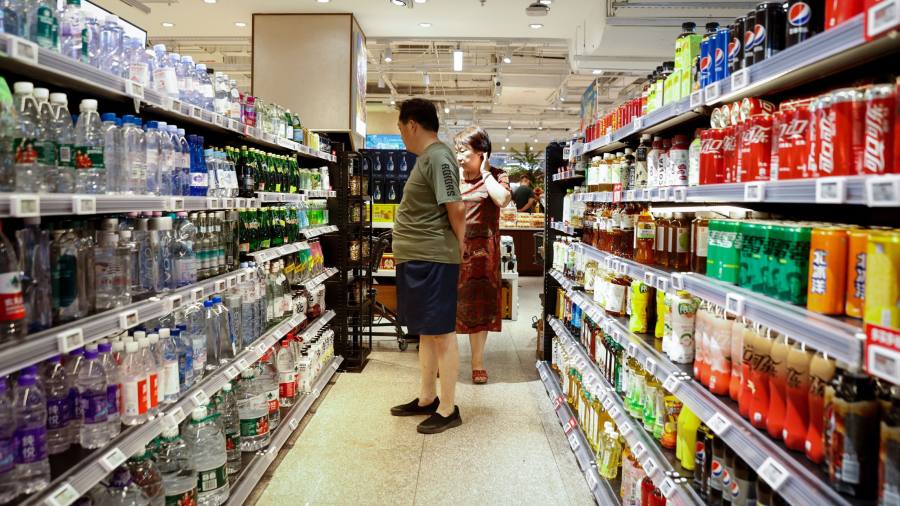
Receive free Chinese economy updates
We’ll send you a myFT Daily Digest email rounding up the latest Chinese economy news every morning.
China’s economy teetered on the brink of deflation in June, adding to calls for Beijing to launch a stronger stimulus package to sustain the country’s sputtering post-Covid recovery.
The consumer price index was flat year on year and declined 0.2 per cent compared with the previous month, while factory gate prices fell at the fastest pace since 2016 as demand for consumer and manufactured products softened.
Analysts expected the figures to lead China’s central bank, the People’s Bank of China, to reduce interest rates again, adding to a round of cuts last month that many believe Beijing will have to supplement with fiscal stimulus policies.
“The ultra-low inflation reading lends supports to our view that the PBoC is likely to implement two more rounds of policy rate cuts,” Nomura economists wrote in a research note.
China is targeting gross domestic product growth of 5 per cent this year as the economy emerges from draconian Covid-19 controls, but the recovery is proving fragile, with property prices and exports falling.
Consumption is still growing, but there are concerns the government will have to do more to sustain the recovery as global economic growth slows, reducing demand for China’s exports.
The weakening economy comes as Beijing is trying to cool tensions with the US, which many blame for a lack of investor confidence in China following a spate of tit-for-tat sanctions.
US Treasury secretary Janet Yellen during a visit to Beijing at the weekend sought to reassure her hosts, including China’s number two official, Premier Li Qiang, that the US was not seeking full-scale economic decoupling.
The fall in CPI missed analysts’ expectations in a Reuters poll of a 0.2 per cent rise.
The producer price index declined 5.4 per cent compared with the same period a year ago, accelerating from a drop of 4.6 per cent in May and faster than the 5 per cent fall forecast by analysts polled by Reuters.
Goldman Sachs analysts said the fall in goods prices was partly due to weaker commodity prices and continued price cuts due to China’s mid-year “618” online shopping festival.
Food inflation rose in June partly because of higher prices for vegetables, which increased 10.8 per cent year on year compared with a decline of 1.7 per cent in May.
But pork prices were low due to weak demand, falling 7.2 per cent year on year in June.
The weakening economic performance comes as Chinese economists are urging the government to shift from its traditional form of stimulus — investing in big-ticket infrastructure projects — to targeting consumers.
“This can more directly correspond to our actual economic blockages and shortcomings,” said Cai Fang, a senior economist from the state-run Chinese Academy of Social Sciences, according to a transcript of a business forum published by Chinese news website Caijing.
China’s onshore yuan opened at Rmb7.2256 to the dollar and was Rmb7.2339 at midday, slightly weaker than the previous late session close, Reuters reported.
Additional reporting by Sun Yu in Beijing